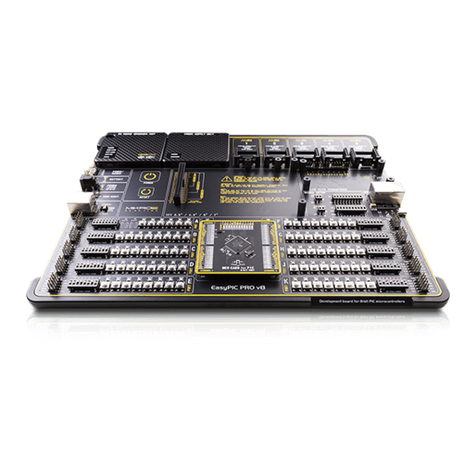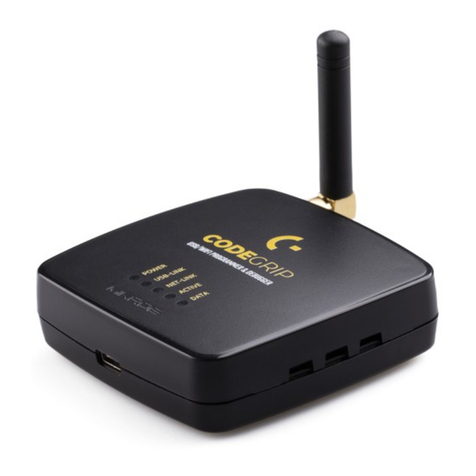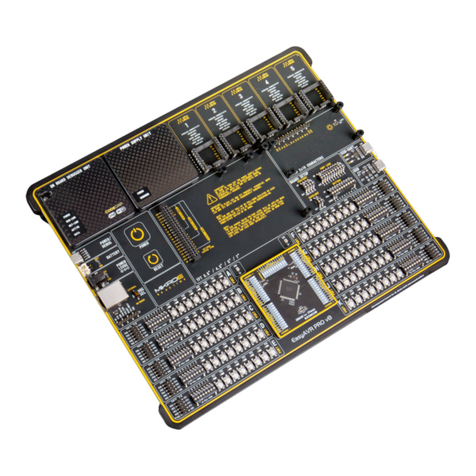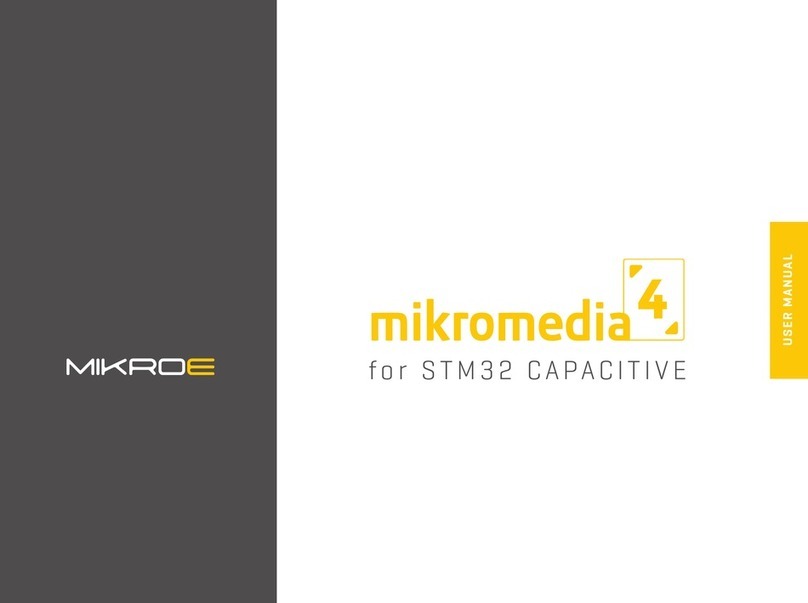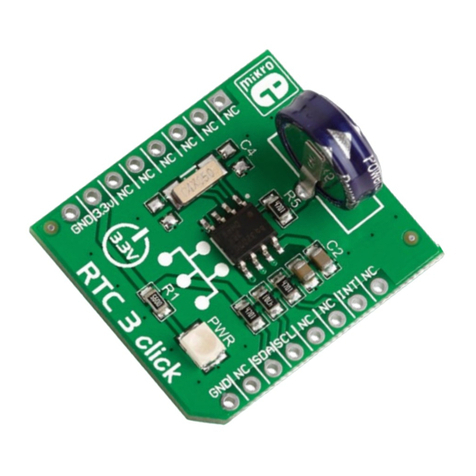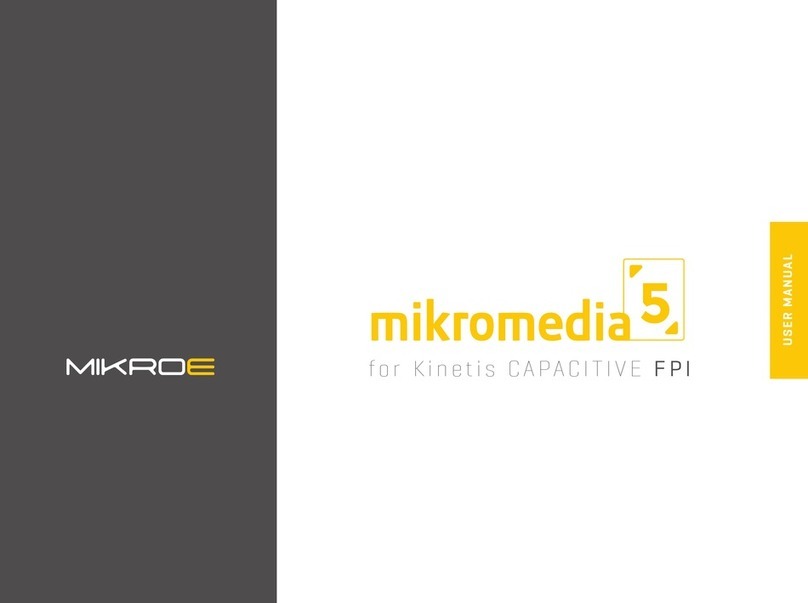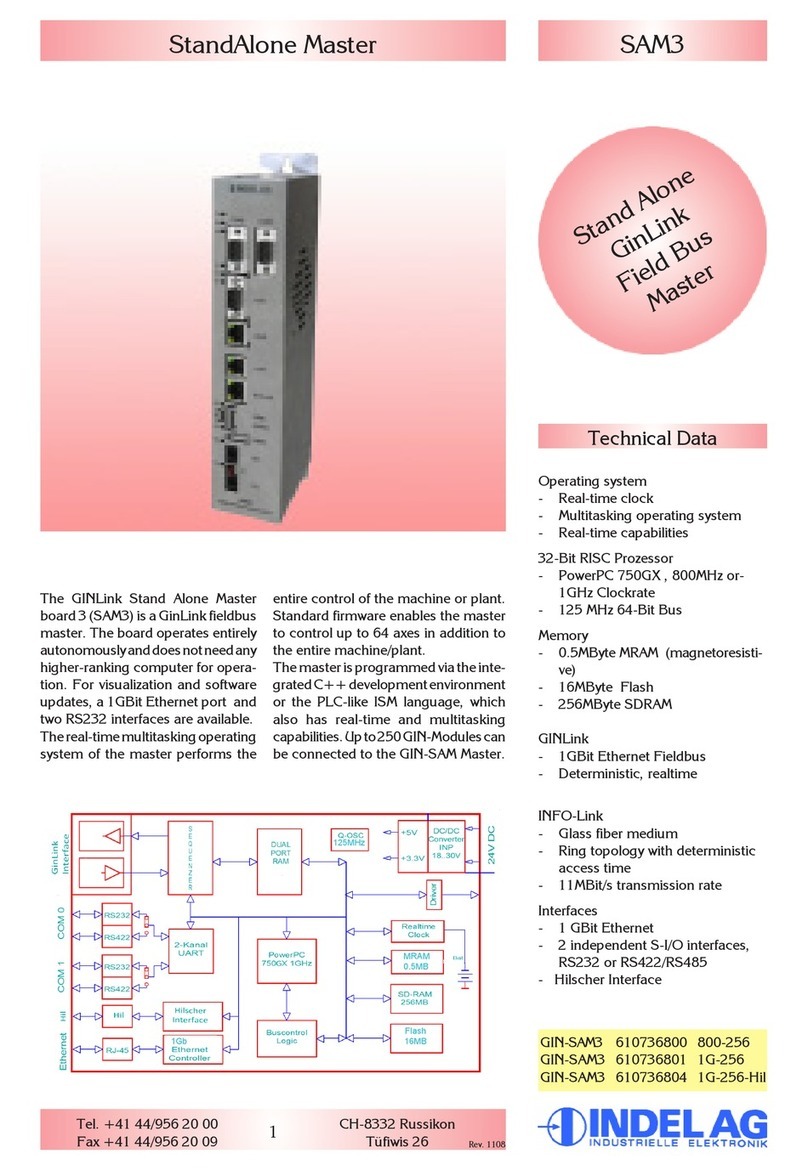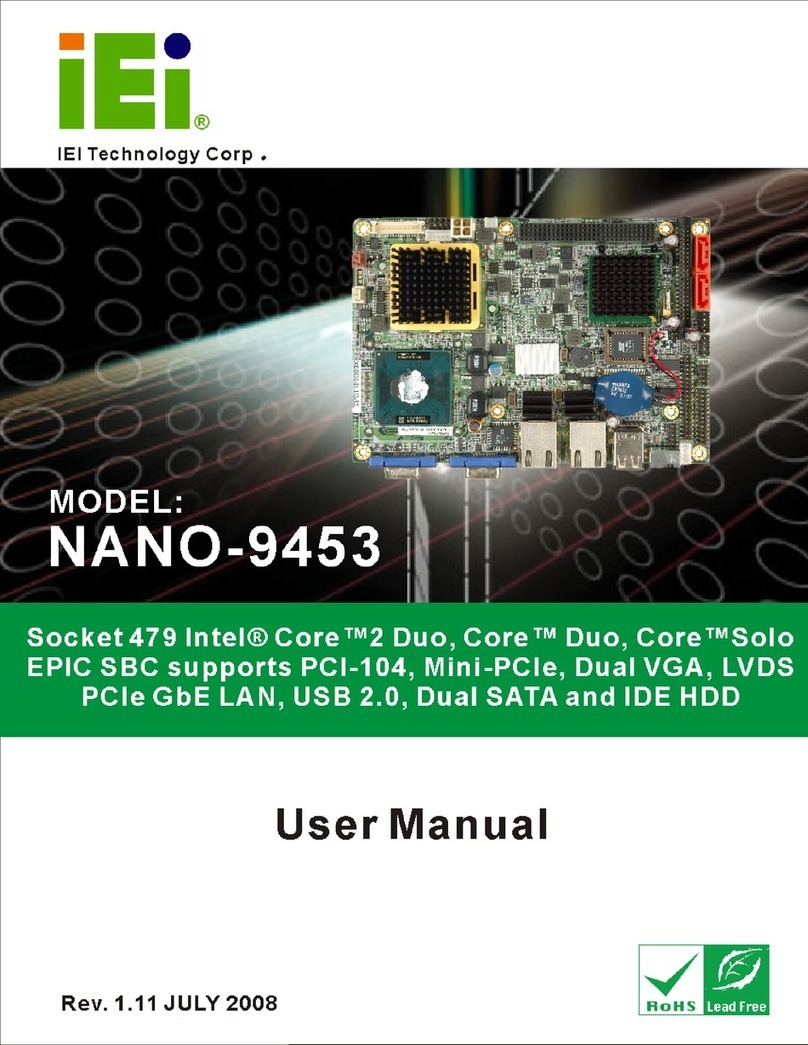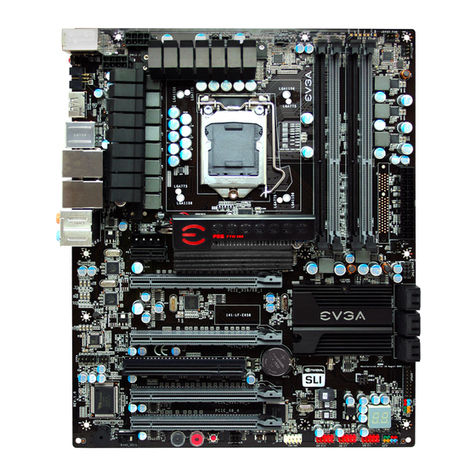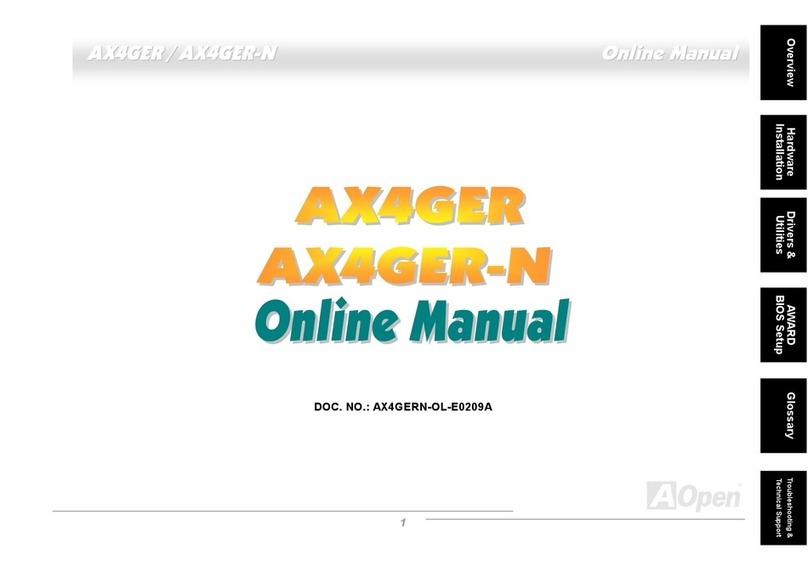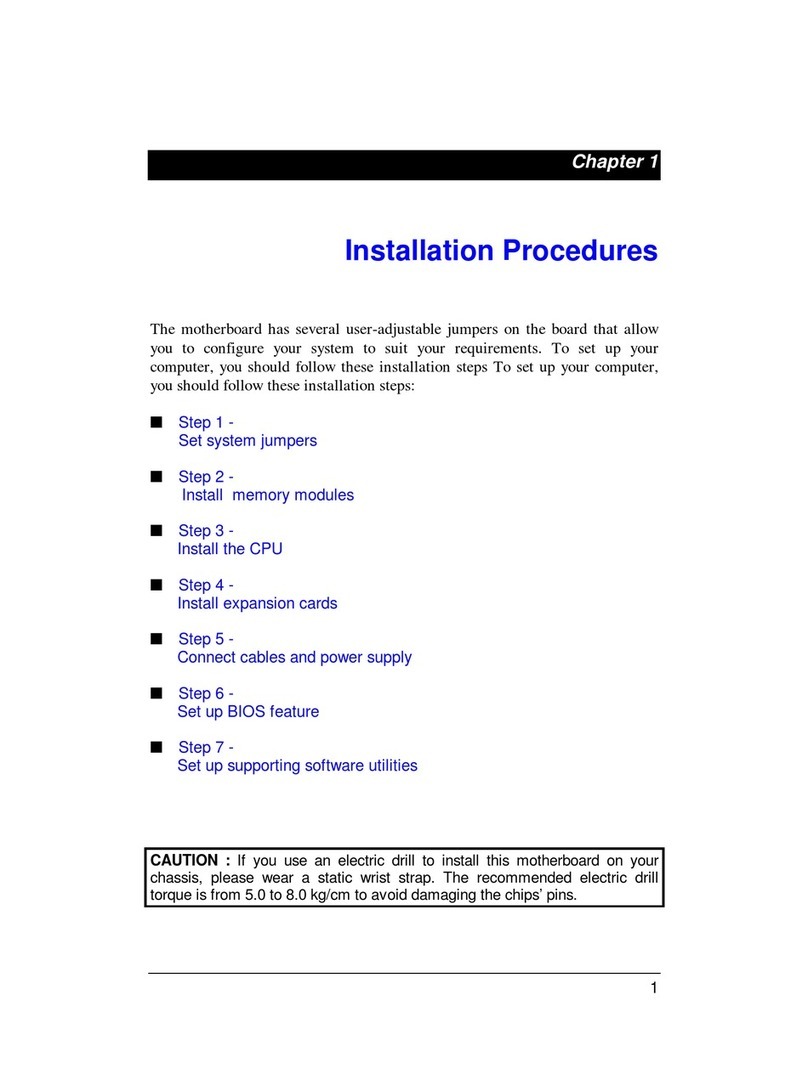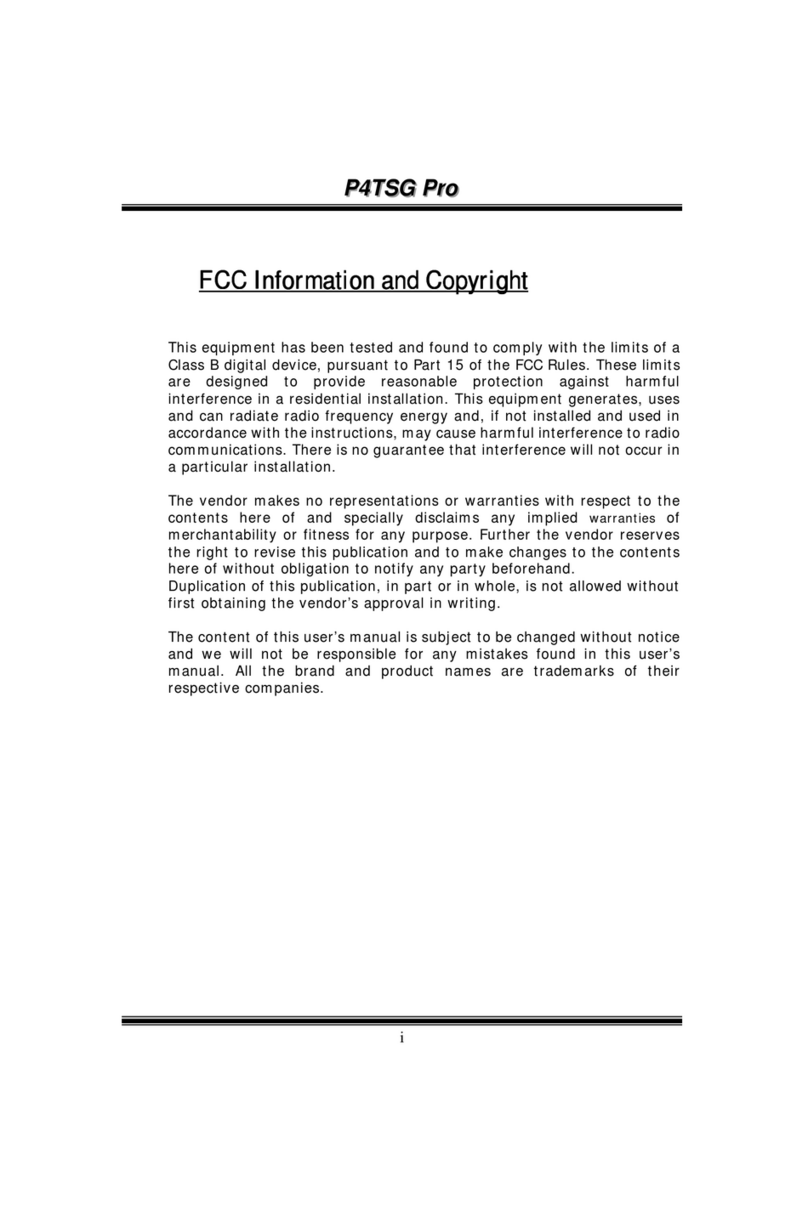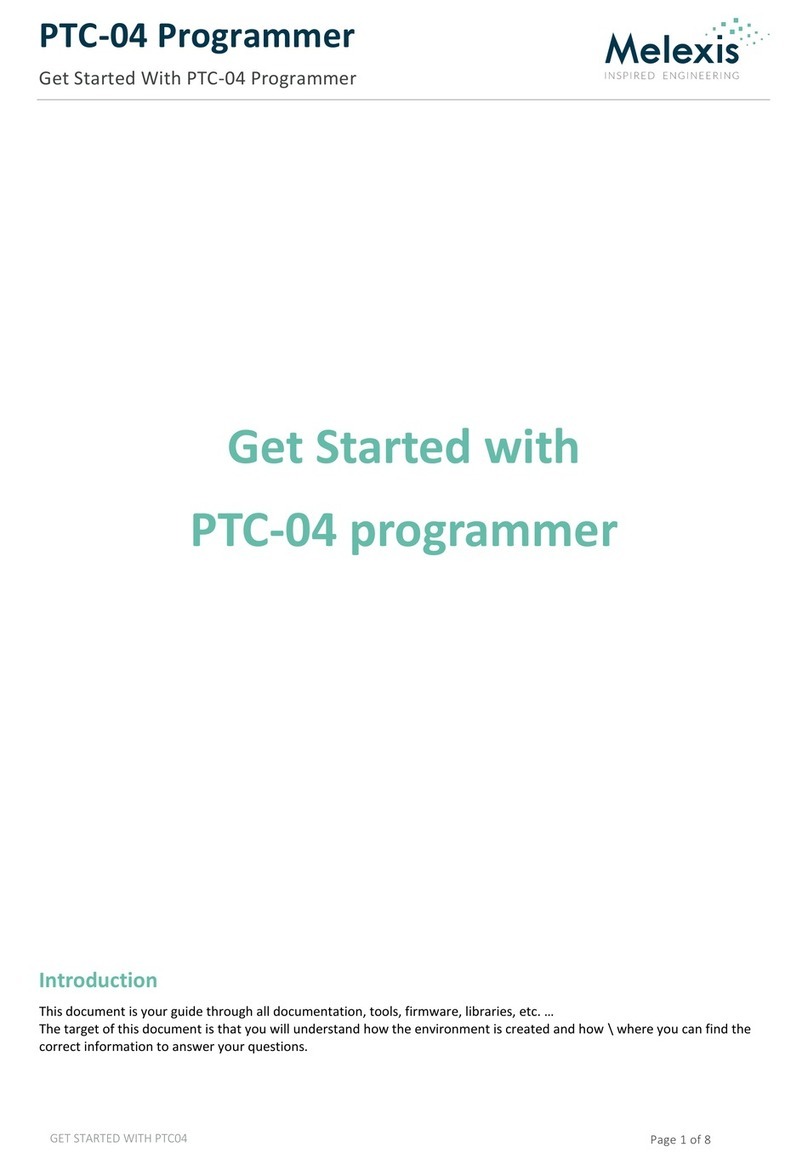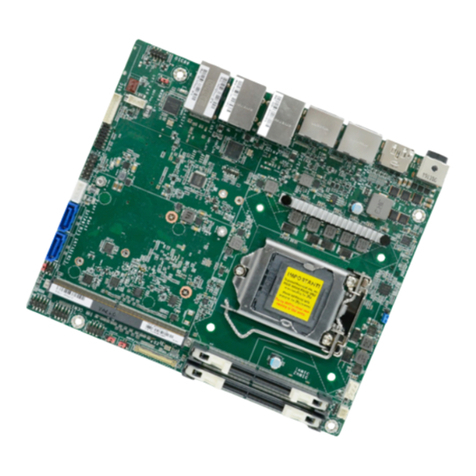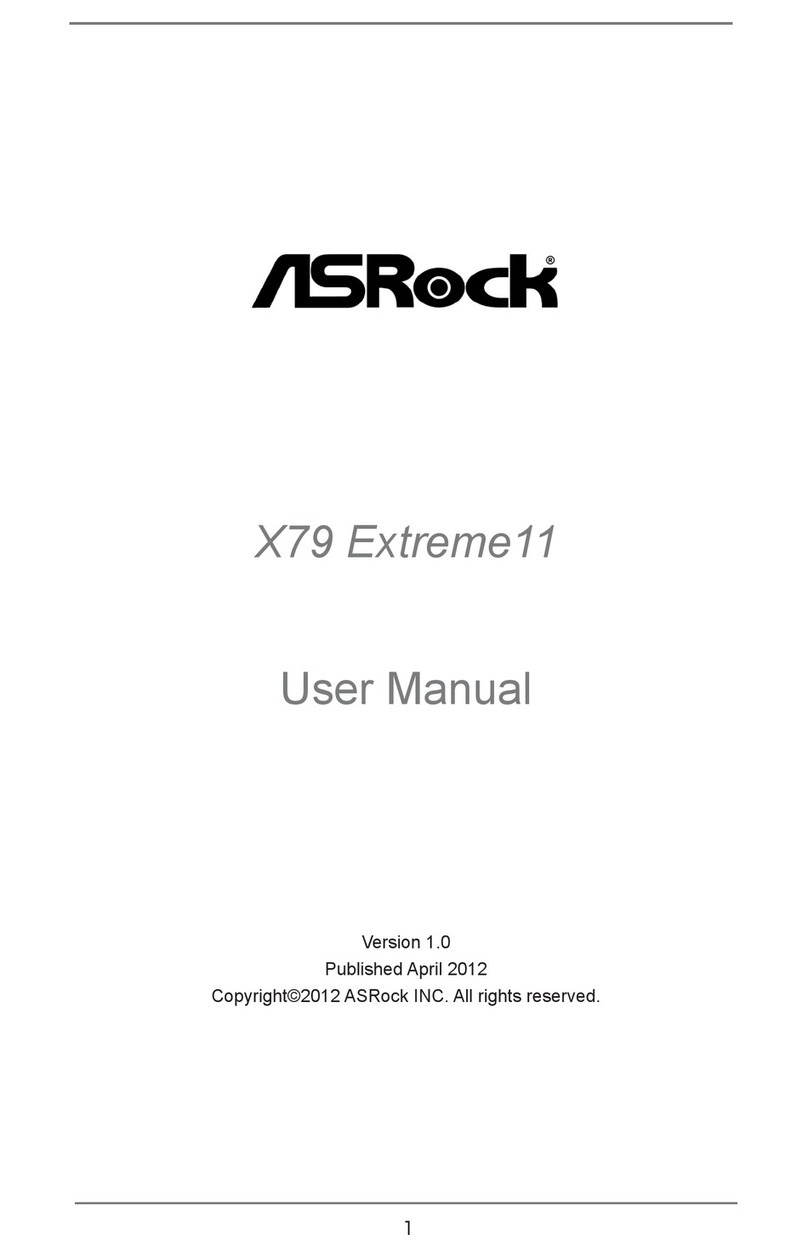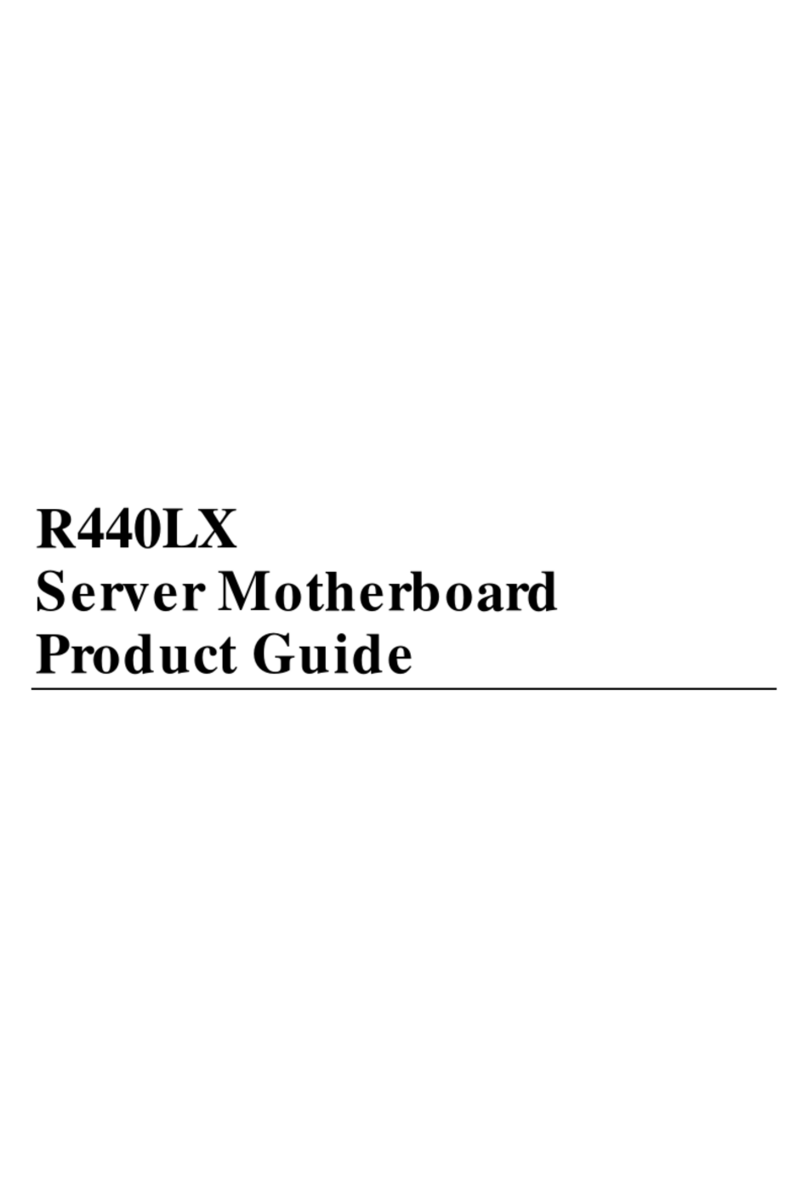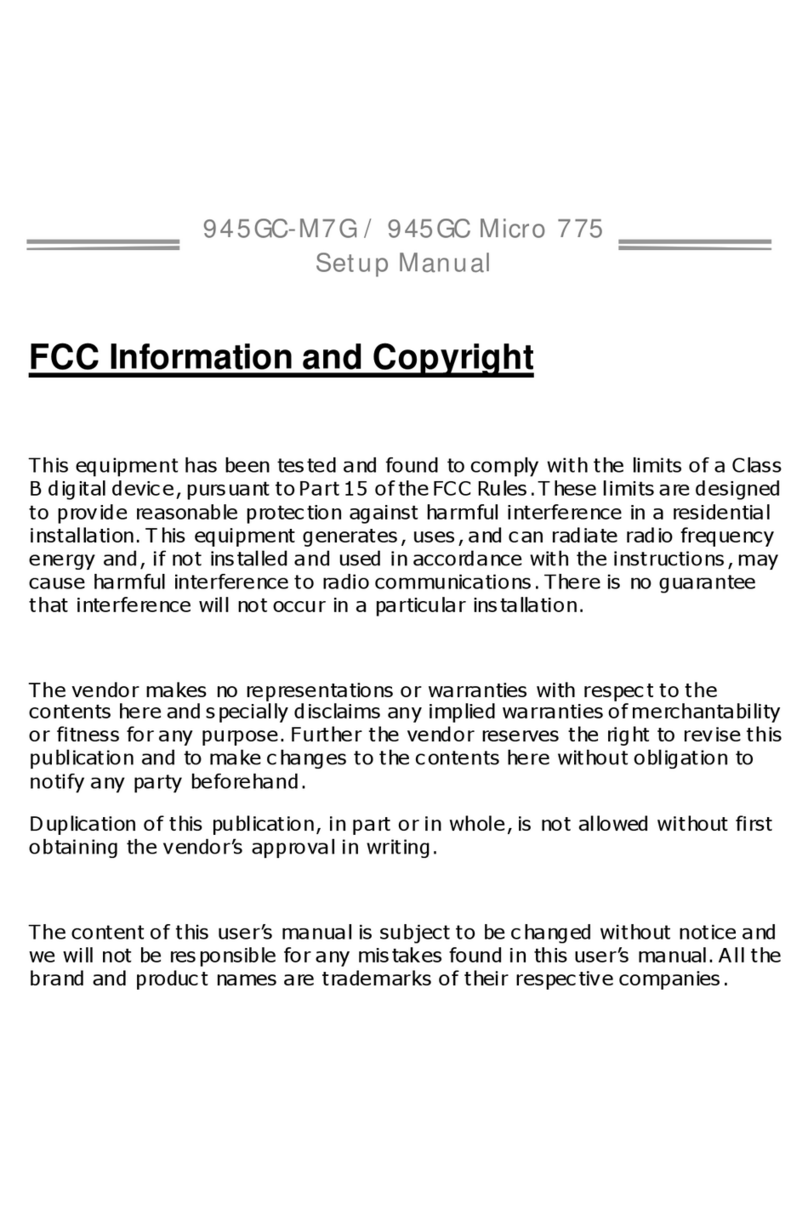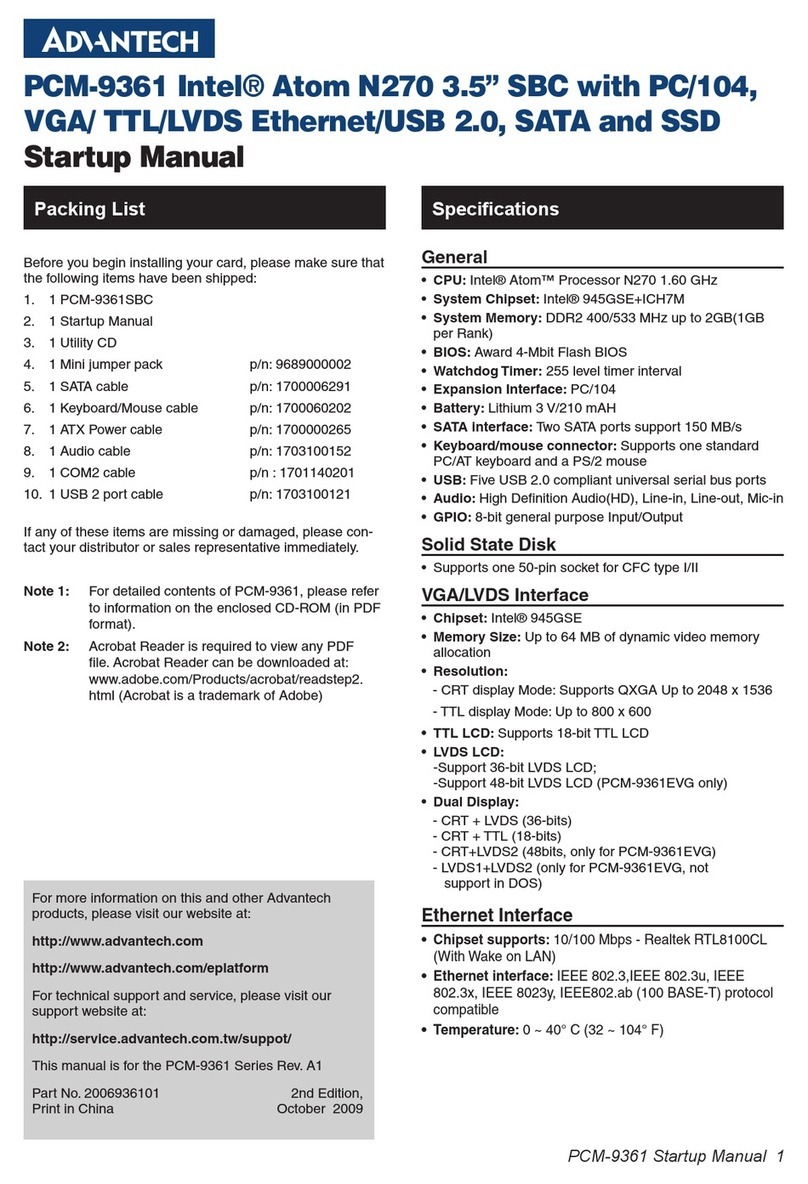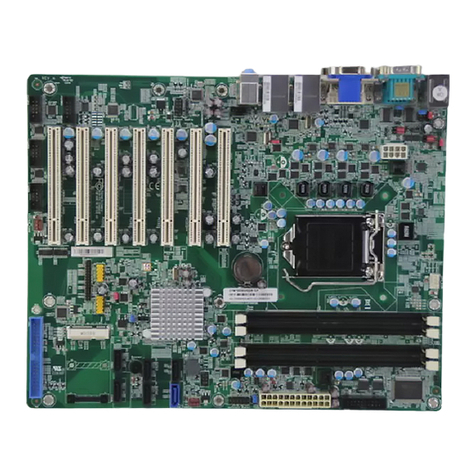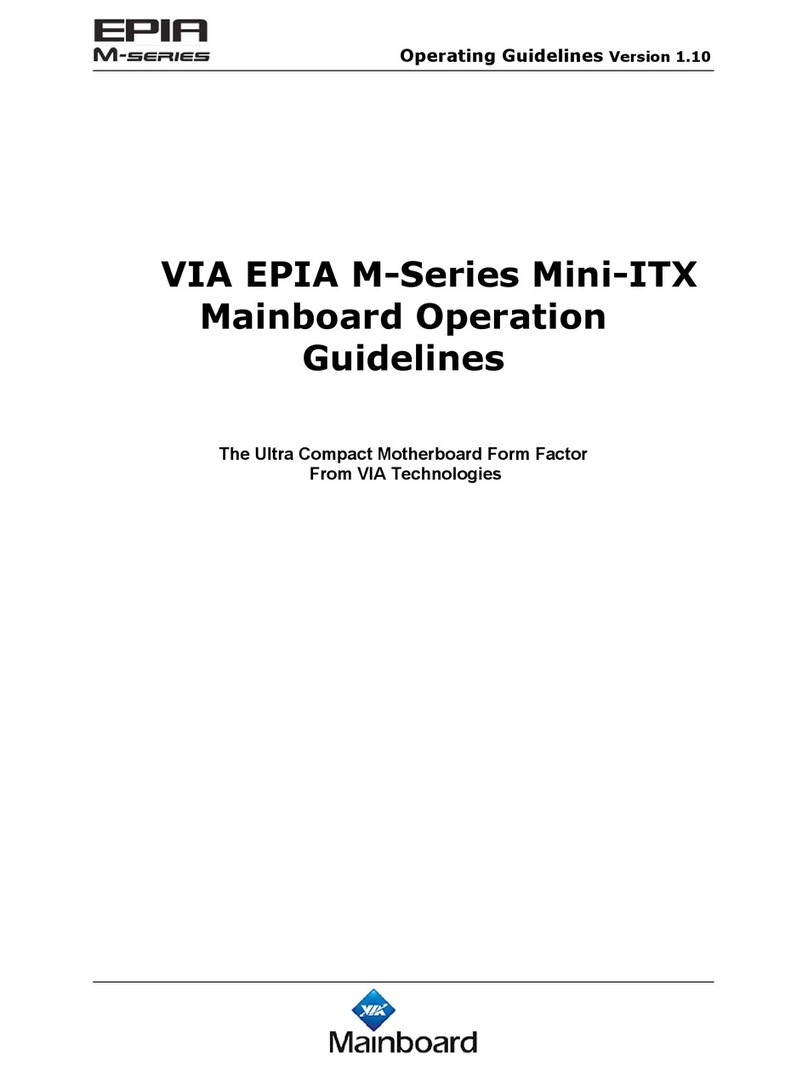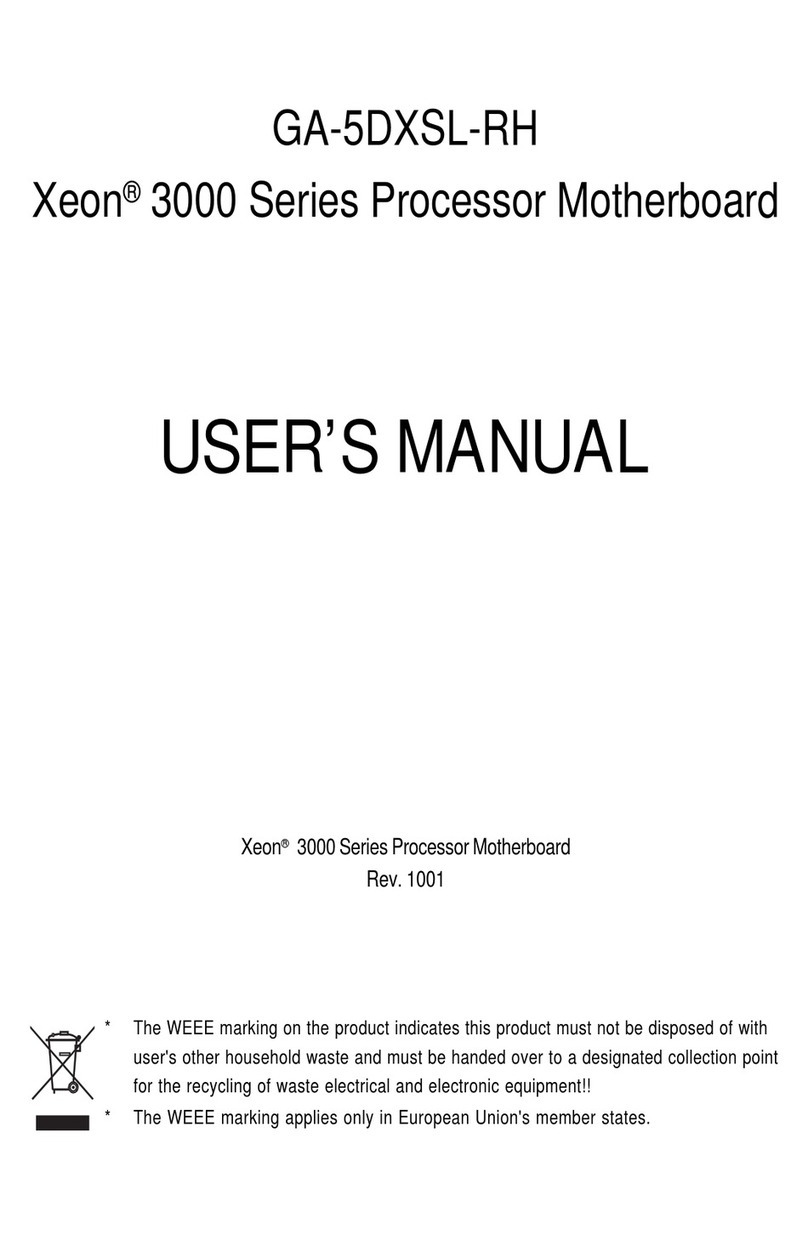Mikroe CLICKER 4 for STM32 User manual

CLICKER 4
for STM32
U S E R M A N U A L

Thank you for choosing Mikroe!
We present you the ultimate solution for embedded development.
Elegant on the surface, yet extremely powerful on the inside, we have designed it to inspire outstanding achievements.
And now, it’s all yours.
Enjoy premium.
Time-saving embedded tools

Table of contents
Introduction 5
1. Key microcontroller features 6
2. MCU programming 7
3. MCU Reset 8
4. Buttons and LEDs 9
5. Power supply 10
6. Connectivity 11
7. Click boards™13


Clicker 4 for STM32 is a compact development board
designed as a complete solution, you can use it to quickly
build your own gadgets with unique functionalities.
Featuring a STM32F767BI MCU, four mikroBUS™sockets for
Click boards™connectivity, power managment, and more, it
represents a perfect solution for the rapid development of
many different types of applications.
At its core, there is a STM32F767BI MCU, a powerful
microcontroller by STMicroelectronics, based on the high-
performance Arm® Cortex®-M7 32-bit RISC core operating
at up to 216 MHz frequency.
It provides sufficient processing power for the most
demanding tasks, allowing Clicker 4 to adapt to any specific
application requirements.
Besides two 1x23 pin headers, four improved mikroBUS™
sockets represent the most distinctive connectivity feature,
allowing access to a huge base of Click boards™, growing on
a daily basis.
Each section of Clicker 4 is clearly marked, offering an
intuitive and clean interface. This makes working with the
development board much simpler and thus, faster.
The usability of Clicker 4 doesn’t end with its ability to
accelerate the prototyping and application development
stages: it is designed as a complete solution which can be
implemented directly into any project, with no additional
hardware modifications required. Four mounting holes
[3.2mm/0.126”] at all four corners allow simple installation
by using mounting screws. For most applications, a nice
stylish casing is all that is needed to turn the Clicker 4
development board into a fully functional, custom design.

P A G E 6
CLICKER 4 for STM32 U S E R M A N U A L
1. Key microcontroller features
STM32F767BI is the 32-bit RISC ARM® Cortex®-M7 core.
This MCU is produced by STMicroelectronics, featuring a
dedicated floating-point unit (FPU), a complete set of DSP
functions, and a memory protection unit (MPU) for elevated
application security. Among many peripherals available on
the host MCU, key features include:
∫2 MB of Flash memory
∫512 KB of SRAM
∫Flexible external memory controller
∫Chrom-ART Accelerator™(DMA2D)
∫Operating frequency up to 216 MHz
∫462 DMIPS/2.14 DMIPS/MHz (Dhrystone 2.1).
For the complete list of MCU features, please refer to the
STM32F767BI datasheet
Figure 1: STM32F767BI MCU block schematic
At its core, Clicker 4 for STM32 uses the STM32F767BI MCU.
MCU FEATURES

2. MCU programming
The host MCU can be programmed and debugged over the 2x5 pin header
(1), labeled as JTAG/SWD. This header allows an external programmer
(preferably CODEGRIP or mikroProg) to be used.
N O T E Before usage, please check if the programmer pinout and the 2x5
pin header pinout are compatible. Based on the used programmer/
debugger tool pinout, a coresponding addapter might be needed.
Figure 2: Clicker 4 for STM32
with CODEGRIP connected
1
MCU PROGRAMMING
P A G E 7
CLICKER 4 for STM32 U S E R M A N U A L
Programming the microcontroller can also be done by using the bootloader
which is preprogrammed into the device by default. All the informations
about the bootloader software can be found on the following page:
www.mikroe.com/mikrobootloader

P A G E 8
CLICKER 4 for STM32 U S E R M A N U A L
3. MCU reset
Clicker 4 for STM32 development board is equipped with the reset button
labeled as RESET (3), located on the front of the board. It is used to
generate a LOW logic level on the MCU reset pin.
The RST pin of the host MCU is also routed to the pin 1 of the 1x23 pin
header (4), allowing an external signal to reset the MCU.
3
4
MCU RESET
Figure 3: Clicker 4 for STM32 front view

4. Buttons
and LEDs
The board also contains eight buttons and LEDs, located on the front side.
Buttons (1) can be used to apply the desired logic state to pins of the MCU
they are routed to. Pressing any of the two buttons can change the logic
state of the microcontroller pins from logic high (1) to logic low (0).
LEDs (2) can be used to visually indicate a logic state of the specific pin.
The maximum current through a single LED is limited with the 4.7k resistor.
Each LED is connected to a MCU pin, and an active LED indicates that a
logic high (1) is present.
Figure 4: Buttons and LEDs view
1 2
BUTTONs AND LEDs
P A G E 9
CLICKER 4 for STM32 U S E R M A N U A L

P A G E 10
CLICKER 4 for STM32 U S E R M A N U A L
Figure 5: Power supply view
23 14
5. Power supply
After a valid power supply source is connected (1 – 2 – 3), Clicker 4 for
STM32 can be powered ON. A LED indicator labeled as PWR (4) indicates
that the board is powered ON.
The power supply unit (PSU) provides clean and regulated power, necessary
for proper operation of the Clicker 4 for STM32 development board. It is
equipped with three different power supply inputs, offering all the flexibility
that Clicker 4 for STM32 needs, and a reliable and safe battery charging
circuit, which allows a single-cell Li-Po/Li-Ion battery to be charged.
As explained, the advanced design of the PSU allows three types of power
sources to be used, offering unprecedented flexibility: when powered by a
Li-Po/Li-ION battery, it offers an ultimate degree of autonomy.
Power is not an issue even if it is powered over the USB cable. It can be
powered over the USB-C connector, using power supply delivered by the
USB HOST (i.e. personal computer), USB wall adapter, or a battery power
bank. There are two power supply connectors available, each with its
unique purpose:
CN1: USB-C connector (3)
J5: Standard 2.5mm pitch XH battery connector (2)
POWER SUPPLY
CLICKER 4 for STM32 U S E R M A N U A L

P A G E 11
CLICKER 4 for STM32 U S E R M A N U A L
CONNECTIVITY
6. Connectivity
Clicker 4 offers a variety of connectivity options including USB (DEVICE) (1),
four standardized mikroBUS™sockets, and two 1x23 pin headers which are
used to directly access the host MCU pins.
Clicker 4 supports USB as device, allowing the development of a wide range
of various USB-based applications.
Figure 6: Front view with
connected USB - C cable
1
CLICKER 4 for STM32 U S E R M A N U A L
CONNECTIVITY
P A G E 11

P A G E 12
CLICKER 4 for STM32 U S E R M A N U A L
24.
25.
26.
27.
28.
29.
30.
31.
32.
33.
34.
35.
36.
37.
38.
39.
40.
41.
42.
43.
44.
45.
46.
1.
2.
3.
4.
5.
6.
7.
8.
9.
10.
11.
12.
13.
14.
15.
16.
17.
18.
19.
20.
21.
22.
23.
RST
VREF
5V
3.3V
RTC
GND
P1
P2
P3
P4
P5
RX1
TX1
RX2
TX2
I1
I2
I3
I4
I5
CS1
SCK1
SDI1
SDO1
CS2
SCK2
SDI2
SDO2
SCL1
SDA1
SCL2
SDA2
CAN
I2C
SPI
PWM
UART
ANALOG
DIGITAL
INTERRUPT
PWR
PWM INTERRUPT I2C UART ANALOG SPI PWR DIGITAL CAN Figure 7: 1x23 pin header view
1
CONNECTIVITY
A lot of the host MCU pins are routed to two 1x23 pin headers, making them
available for further connectivity. In addition to MCU pins, some additional
peripheral pins are also routed to this header.
CAN-RX
CAN-TX
A1
A2
A3
A4
A5
D1
D2
D3
D4
D5
D6
D7

Figure 8: Clicker 4 for STM32 with NFC 2 click connected
7. Click boards™
Click boards™are standardized add-on boards that carry a variety
of different electronic devices. They are designed to perfectly fit the
mikroBUS™socket. Engineered to deliver the best performances for the
used components, they save developers of testing and troubleshooting
often associated with the prototyping phase. They enhance rapid
development and accelerate time to market. These ready-to-use boards
require no additional hardware configuration.
More information at www.mikroe.com/click
THE LARGEST ADD-ON BOARD COLLECTION IN THE WORLD.
CLICKER 4 for STM32 U S E R M A N U A L
CLICK BOARDS™
P A G E 13

A NEW
IDEA
IS JUST
A CLICK
AWAY.

All the products owned by MikroElektronika are protected by copyright law and international copyright treaty. Therefore, this manual is to be treated as any other copyright
material. No part of this manual, including product and software described herein, must be reproduced, stored in a retrieval system, translated or transmitted in any form or
by any means, without the prior written permission of MikroElektronika. The manual PDF edition can be printed for private or local use, but not for distribution. Any modification
of this manual is prohibited.
MikroElektronika provides this manual ‘as is’ without warranty of any kind, either expressed or implied, including, but not limited to, the implied warranties or conditions of
merchantability or fitness for a particular purpose.
MikroElektronika shall assume no responsibility or liability for any errors, omissions and inaccuracies that may appear in this manual. In no event shall MikroElektronika, its
directors, officers, employees or distributors be liable for any indirect, specific, incidental or consequential damages (including damages for loss of business profits and
business information, business interruption or any other pecuniary loss) arising out of the use of this manual or product, even if MikroElektronika has been advised of the
possibility of such damages. MikroElektronika reserves the right to change information contained in this manual at any time without prior notice, if necessary.
TRADEMARKS
The MikroElektronika name and logo, the MikroElektronika logo, mikroC, mikroBasic, mikroPascal, mikroProg, mikromedia, Fusion, Click boards™and mikroBUS™are trademarks
of MikroElektronika. All other trademarks mentioned herein are property of their respective companies.
All other product and corporate names appearing in this manual may or may not be registered trademarks or copyrights of their respective companies, and are only used for
identification or explanation and to the owners’ benefit, with no intent to infringe.
Copyright © MikroElektronika, 2020, All Rights Reserved.
HIGH RISK ACTIVITIES
The products of MikroElektronika are not fault – tolerant nor designed, manufactured or intended for use or resale as on – line control equipment in hazardous
environments requiring fail – safe performance, such as in the operation of nuclear facilities, aircraft navigation or communication systems, air traffic control, direct life
support machines or weapons systems in which the failure of Software could lead directly to death, personal injury or severe physical or environmental damage (‘High
Risk Activities’). MikroElektronika and its suppliers specifically disclaim any expressed or implied warranty of fitness for High Risk Activities.
D I S C L A I M E R

If you want to learn more about our products, please visit our website at www.mikroe.com
If you are experiencing some problems with any of our products or just need additional information,
please place your ticket at www.mikroe.com/support
If you have any questions, comments or business proposals, do not hesitate to contact us at offi[email protected]
Time-saving embedded tools
Table of contents
Other Mikroe Motherboard manuals
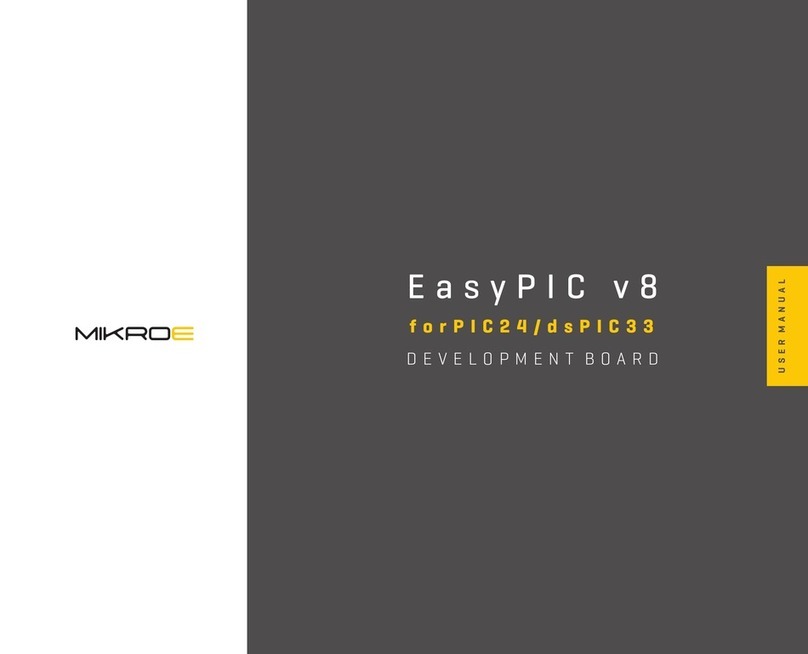
Mikroe
Mikroe EasyPIC V8 User manual
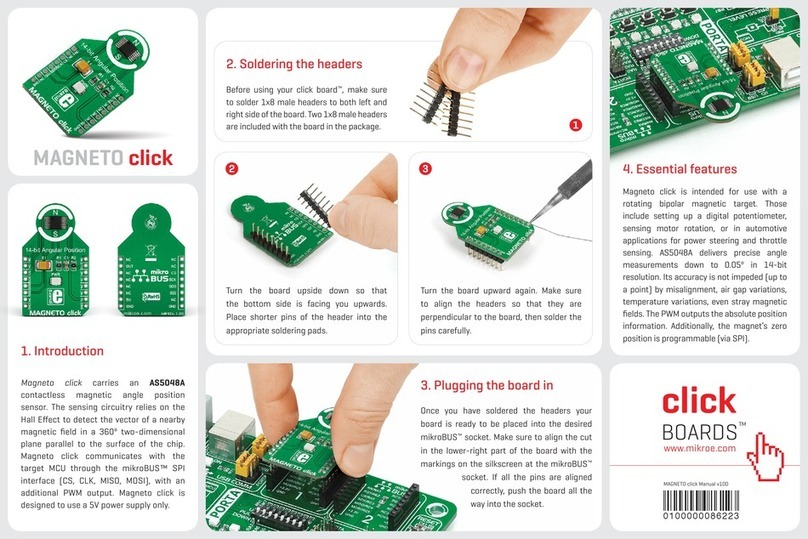
Mikroe
Mikroe MAGNETO click User manual

Mikroe
Mikroe EasyPIC V8 User manual
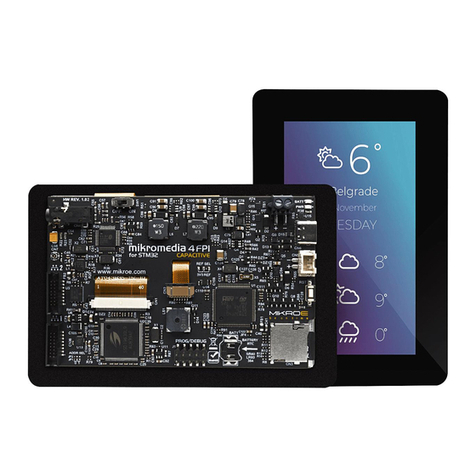
Mikroe
Mikroe Mikromedia 4 User manual
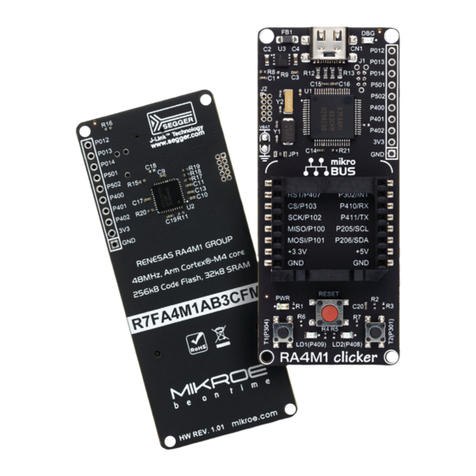
Mikroe
Mikroe RA4M1 CLICKER User manual
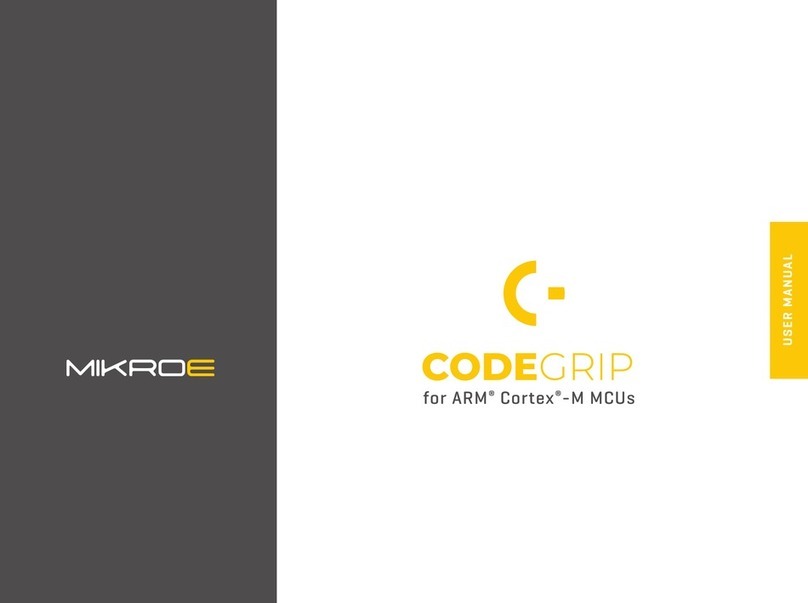
Mikroe
Mikroe Codegrip User manual
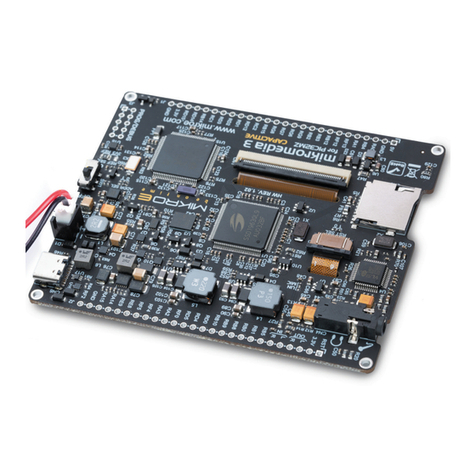
Mikroe
Mikroe mikromedia 3 User manual
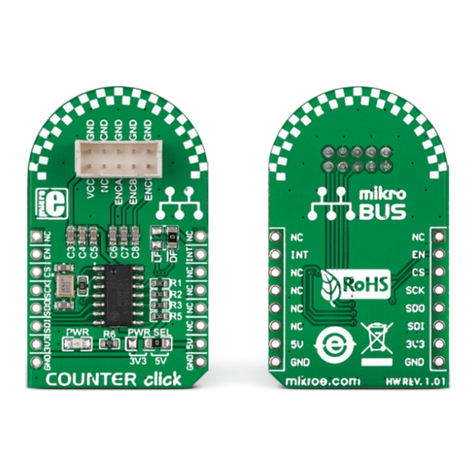
Mikroe
Mikroe COUNTER click User manual
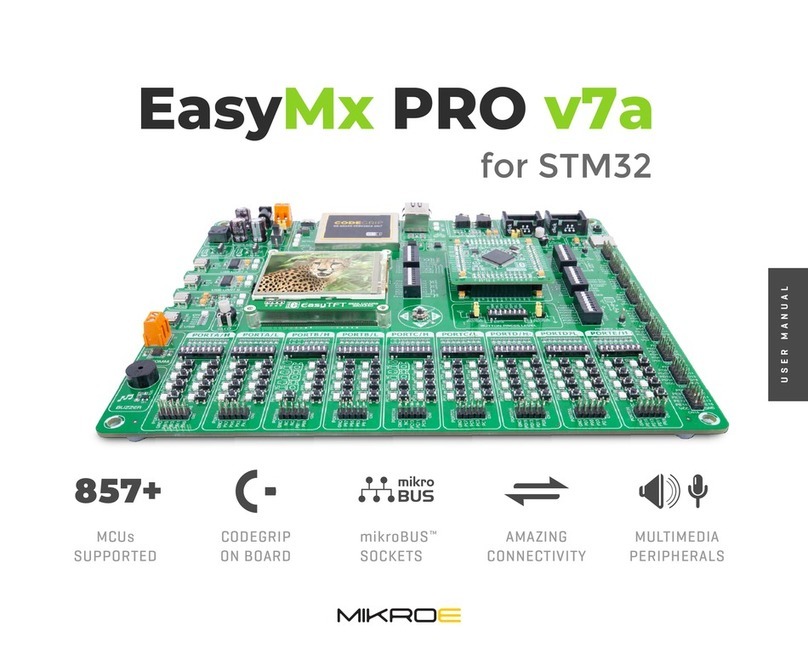
Mikroe
Mikroe EasyMx PRO v7a User manual
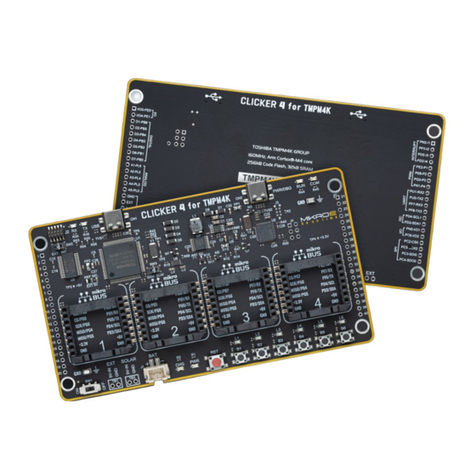
Mikroe
Mikroe CLICKER 4 For TMPM4K User manual
